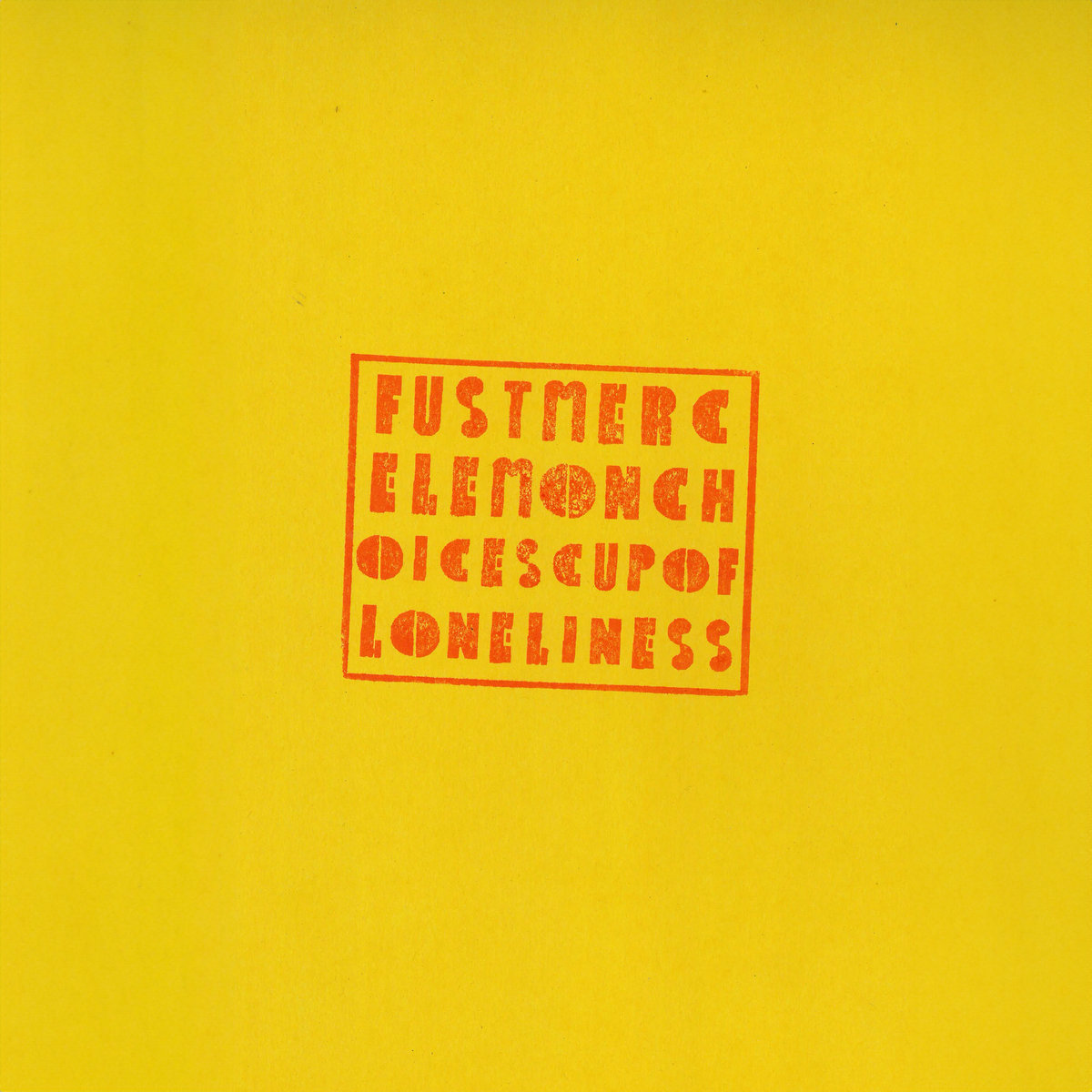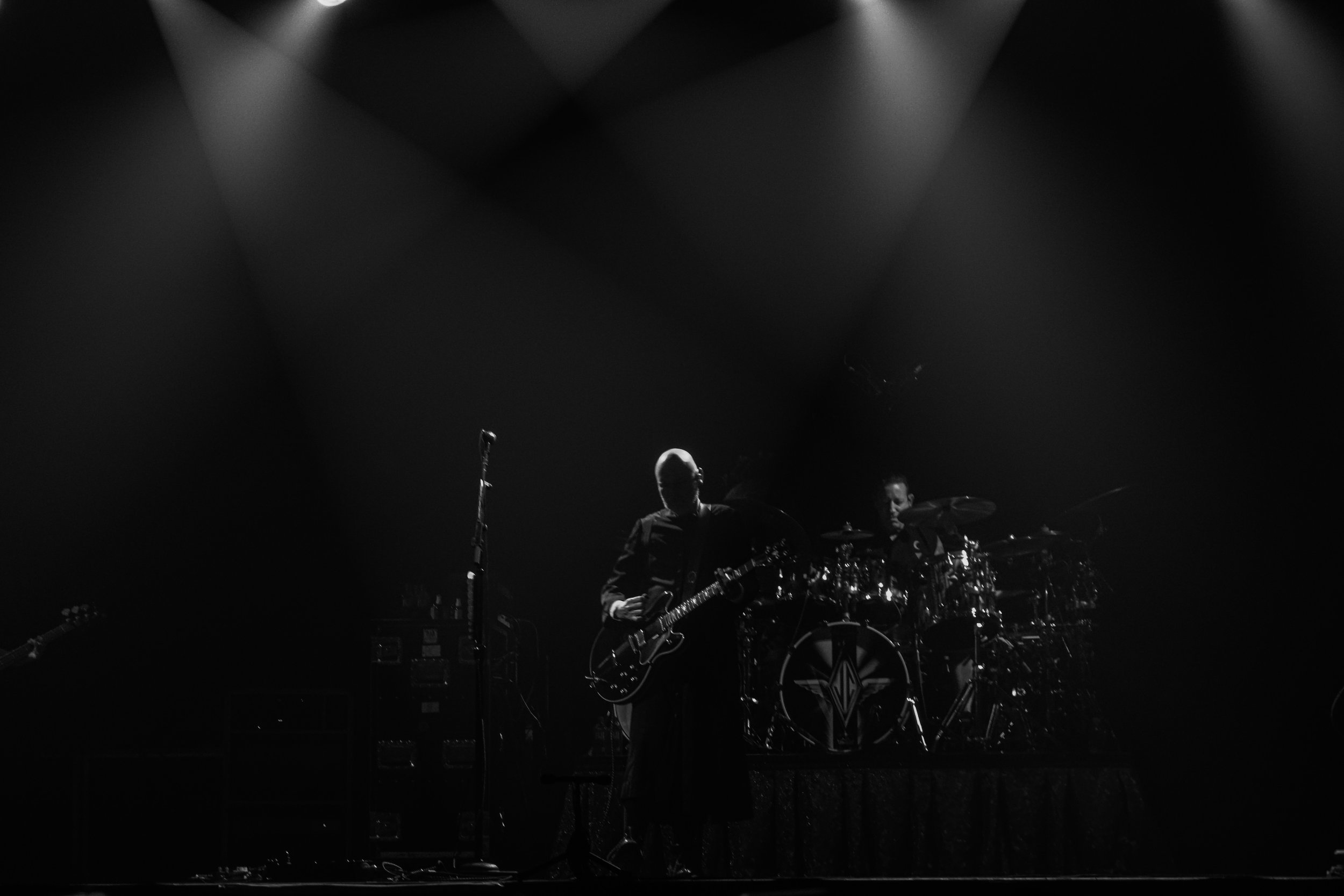The Great Dismal: Falling in Love With Shoegaze and Finding Hope in the Darkness
/It’s always odd when a single album is held up as the “definitive” work of a band or even an entire genre. It leads to this interesting phenomenon where prospective fans will become interested in said band or genre, learn that this single work is the de facto entry point, and dive in with skewed expectations. The problem then becomes; what if they don’t like that one album?
Let’s say someone wants to get into Radiohead. They might learn that Kid A is considered the group’s most groundbreaking record and give it a listen. If they don’t like Kid A, they might write Radiohead off as not “for them.” In reality, this hypothetical listener might have enjoyed a different Radiohead album more, and it may only be Kid A that’s not “for them.” There’s no accounting for taste, and there are few (if any) points of consensus when it comes to music.
This exact thing happened to me with shoegaze. It’s easy to see why My Bloody Valentine’s Loveless is as lauded as it is, especially when you factor in its influence and historical context. But here’s a controversial sentence: I don’t really like Loveless. I can see the appeal, and I don’t begrudge anyone for digging it, but the record has never quite clicked with me in the way it has with others.
The problem becomes when a single album is cited as the groundbreaking masterwork of a genre, that must also mean that it’s the best, right? It almost feels as if there’s nowhere to go from there but down. That means when I listened to Loveless for the first time and didn’t love it, I thought, “huh, shoegaze must not be for me.” Au contraire. I spent the better part of 2021 immersing myself in shoegaze, eventually hitting an obsessive fever pitch sometime in December. While everyone else was getting holly and jolly in a month that’s usually reserved for my endless supply of holiday playlists, I was listening to some of the most dour shit imaginable and loving it.
I found something in shoegaze, something I couldn’t get anywhere else. While I’ve long been a fan of Greet Death, I hadn’t considered myself a “shoegaze guy” because all my love was allocated to this one band. Something about Greet Death’s macabre midwest lyricism and heavy-as-shit riffs clicked with my brain. For months I listened to their discography on a near-nightly basis. I never found any other bands that even came close until Wednesday dropped Twin Plagues midway through 2021.
Twin Plagues soon supplanted Greet Death as my go-to music for those times when nothing else sounded good. It was a record that lent me some degree of comfort and compassion in a year when I needed those things badly. If you’re curious to read more about Twin Plagues, I covered the album in greater detail in our Album of the Year countdown. For the purposes of this article, the important thing to note is that this record ended up opening the floodgates to a whole host of shoegaze bands. For some reason, Wednesday’s approach gave me a new perspective on the genre and I was able to approach shoegaze with an open mind. As often happens with music I love, my curiosity gave way to obsession.
With this renewed enthusiasm, I dug back through my own history and realized I had more brushes with the genre than I initially realized. I soon discovered that the dream-pop bands I’d been listening to for years like Beach House, Alvvays, and Slowdive were considered shoegaze-adjacent. I traced the genre back to grungy songs of my youth like “Mayonaise” by The Smashing Pumpkins and “Exhausted” by Foo Fighters, which were informed by the genre while it was at its commercial peak. I even learned that recent bands like Gleemer, Holy Fawn, and Clearbody all fit the bill as well. It turned out I’d been enjoying shoegaze for longer than I realized.
Once my mind was re-opened to the genre thanks to Twin Plagues, I went on an absolute tear, slowly uncovering (and subsequently falling in love with) different landmark albums throughout the genre’s history. I spent weeks obsessing over the bouncy Cure-inspired flavor of DIIV’s Oshin. I wrapped myself in the comforting crush of Cloakroom’s Time Well. Hell, even this silly TikTok got me to dig through Hum’s back catalog, and that’s not something I would have even considered a year ago. It’s been a blast.
This is all a (very long) preamble to talk about my latest and deepest obsession: Nothing’s fourth studio album, The Great Dismal. This is a record I listened to a couple of times when it was first released in 2020, but I only recently rediscovered thanks to this personal shoegaze renaissance. An unattentive or cursory listen to The Great Dismal will reveal many standard trappings of the genre; fuzz, feedback, and far-off vocals. Still, something about this record kept drawing me back in. At first, it was “Famine Asylum,” which opens with a burst of guitar distortion that rears its head up through the track like a powerful stallion. Then one day, while on a run, I caught myself singing the chorus of “Catch a Fade.” Soon after that, I became transfixed by the cathartic build of “Blue Mecca.”
Gradually, individual pieces of this album began to reveal themselves to me, and before I knew it, I was listening to the whole thing in full because every song hit a different fold of my brain. As I kept listening, individual lyrics and more subtle instrumental aspects slowly emerged from the dark swirl.
I think that slow unveiling is a huge reason why I kept gravitating towards The Great Dismal and why I’m writing about it now. Once the few killer riffs, earworm choruses, and bizarre samples become commonplace, individual words begin to unveil themselves. First, it’s just a single phrase that rises above the dreamy swirl like “Feed me grapes” or “Innocence preserved by death,” but soon, deeply poetic and philosophical sentiments appear from the ether. The aforementioned “Blue Mecca” hinges on a repetition of “Yesterday is a long way down / Leviathan but can't be found,” which I find both achingly beautiful and spiritually provocative. It’s also sung over a gorgeous crescendoing post-rock guitar which feels tailor-made for my taste.
Elsewhere on the album, there are musings like, “It’s amazing that my shell has kept its shape,” which embody a sort of ideological physical resilience. It’s snapping to in the midst of chaos, unplugging, and taking stock of your own being. Lines like this stand out like a lighthouse offering respite to weary sailors. It’s a nine-word observation that carries the same self-assured punch as the entirety of “This Year” before delving back into the depths.
Occasionally the group turns their gaze outward, like on “April Ha Ha,” where lead singer Domenic Palermo sings, “Isn't it strange / Watching people / Try and outrun rain?” which comes across as a poignant observation on the futility of denialism. In other places, Nothing prod at themselves, singing, “So stumble through / A work of art / Something simple and defeating from the start.” Lines like these speak to the futility of creating anything right now, given what we are all facing down.
On top of these incredible lyrics, the more I learned about Nothing and the history of this album, the more I found myself fascinated. Recorded in February of 2020 at the very beginning of quarantine, the band essentially sealed themselves in the studio to record this album. As the world outside slowly unfurled, Nothing crafted these crushing riffs and honed these cutting observations. It felt like a probe, investigating the human condition from a one-of-a-kind vantage point that has now long since passed us by. This is all on top of a tumultuous history of wrongful imprisonment, genre pivots, lineup changes, and general tragedy. At a certain point, recording an album while teetering on the brink of a global pandemic seems par for the course for a group who self-describes themselves as a “notoriously unlucky band.”
Side-note, the hazmat suit press photos that came out of this album cycle are downright iconic.
The Great Dismal bills itself as an exploration of “existentialist themes of isolation, extinction, and human behavior in the face of 2020’s vast wasteland.” In regards to its relation to the swamp of the same name in southeast Virginia, the band explains, “The nature of [the swamp’s] beautiful, but taxing environment and harsh conditions can’t ever really be shaken or forgotten too easily.”
That’s another reason I find myself pulled towards this album. While 2020 was one thing, we currently find ourselves on the brink of something potentially worse. That uncertainty has been plaguing my mind for the last few months, and I’ve ironically found some level of solace in the soundscapes of shoegaze. These songs mirror my internal landscape; dark, rocky, and not entirely forthcoming. They’re not nihilistic per se, but they still acknowledge the darkness that we find ourselves in. One of the reasons I essentially swapped my holiday playlists for shoegaze this past season is that it felt ingenuine to be celebrating or forcing warmth at a time when the world feels like it’s falling apart.
There’s plenty to be angry and upset about out in the world. Every day we face down fascism, racism, impending climate collapse, a worldwide plague, and an indifferent government operating an ever-growing police state. Even in the face of all that, I think it’s important to hold on to some sense of hope. If we don’t have hope, what’s it all for? The songs on this record may be sonically dismal, but they’re not hopeless. That’s the type of energy I hope to maintain this year.
On reading that, you might think that striving to maintain a disposition of anything sided with “dismal” might sound less-than-optimistic, but I don’t view it that way. Large swaths of our reality are tainted by abject horror, and we can’t shy away from that. Pretending things don’t exist doesn’t make them go away. Things are bleak, terrifying, and dismal, but in the face of all this horror, there’s still a world worth fighting for.







